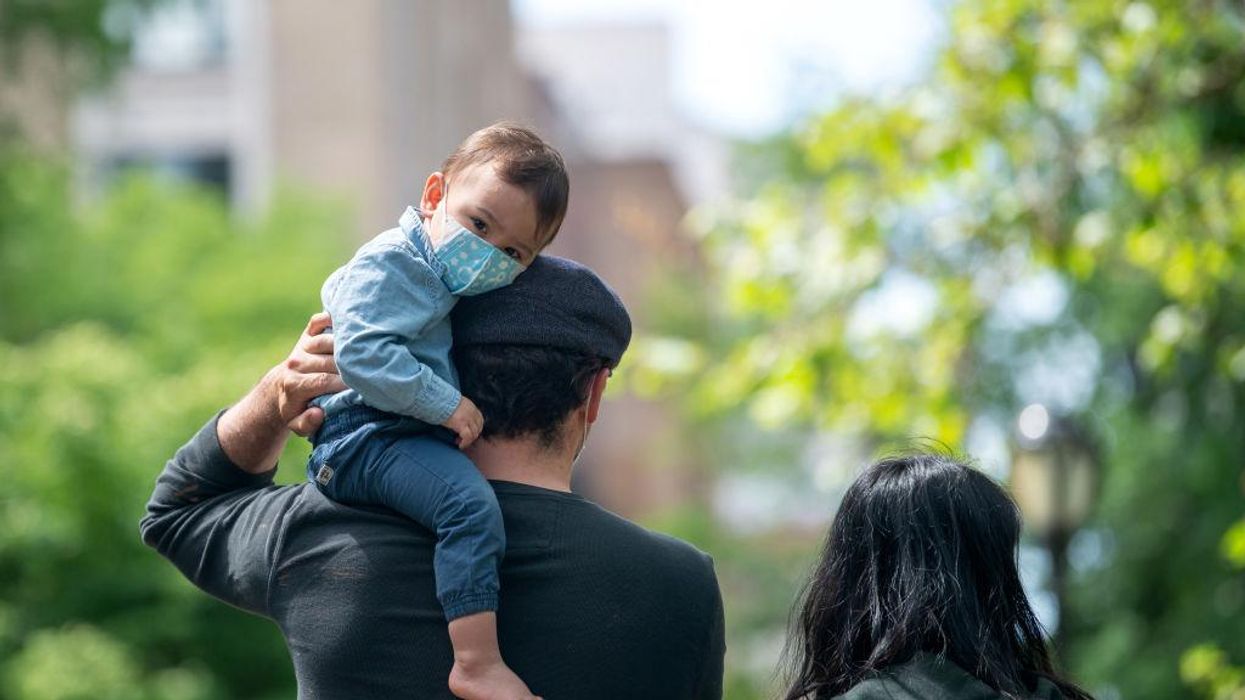
Alexi Rosenfeld/Getty Images

The U.S. Centers for Disease Control and Prevention used a misleading statistic in its updated mask wearing guidance last month that exaggerated the risk of contracting COVID-19 while outdoors, according to the New York Times.
When CDC Director Dr. Rochelle Walensky announced the updated guidance on mask-wearing, she told reporters that studies showed "less than 10 percent" of documented COVID-19 transmissions occurs outdoors. But several epidemiologists who spoke to the Times say the CDC's benchmark is misleading.
The number "seems to be a huge exaggeration," said Dr. Muge Cevik, a virologist at the University of St. Andrews.
Epidemiologists who spoke to the Times say the actual rate of outdoor transmission is less than 1% and may even be below 0.1%. If outdoor transmission does occur, it happens in crowded places or during close conversation, the Times' David Leonhardt reported.
By saying outdoor transmission is "less than 10 percent" of COVID-19 transmission, the CDC actually made the risk of catching COVID outdoors seem far greater than it actually is.
Leonhardt wrote:
This isn't just a gotcha math issue. It is an example of how the C.D.C. is struggling to communicate effectively, and leaving many people confused about what's truly risky. C.D.C. officials have placed such a high priority on caution that many Americans are bewildered by the agency's long list of recommendations. Zeynep Tufekci of the University of North Carolina, writing in The Atlantic, called those recommendations "simultaneously too timid and too complicated."
They continue to treat outdoor transmission as a major risk. The C.D.C. says that unvaccinated people should wear masks in most outdoor settings and vaccinated people should wear them at "large public venues"; summer camps should require children to wear masks virtually "at all times."
These recommendations would be more grounded in science if anywhere close to 10 percent of Covid transmission were occurring outdoors. But it is not. There is not a single documented Covid infection anywhere in the world from casual outdoor interactions, such as walking past someone on a street or eating at a nearby table.
He went on to explain how the academic research cited by the CDC to come up with the "10 percent" number seems suspect. Frequently cited studies linked most outdoor transmissions of COVID-19 to construction sites in Singapore.
"In one study, 95 of 10,926 worldwide instances of transmission are classified as outdoors; all 95 are from Singapore construction sites. In another study, four of 103 instances are classified as outdoors; again, all four are from Singapore construction sites," Leonhardt wrote.
Noting that it doesn't make sense for all cases of outdoor transmission to be linked to construction sites, Leonhardt said Times investigative reporter Shashank Bengali learned that the government agency that collects data on COVID-19 in Singapore did not categorize construction-site cases as outdoor transmission.
In fact, there is reason to think many of the infections at those sites occurred indoors, with workers congregating in enclosed spaces for meetings, eating lunch together, or working in buildings that have completed concrete shells but need their interiors constructed.
Additionally, academic researchers collecting data on COVID-19 from government databases made a judgment call to define outdoor spaces "very broadly."
"We had to settle on one classification for building sites, and ultimately decided on a conservative outdoor definition," said French researcher Quentin Leclerc, who authored one of the papers analyzing Singapore. Another paper defined "workplace, health care, education, social events, travel, catering, leisure and shopping" settings as outdoors, only counting "mass accommodation and residential facilities" as indoor settings.
The result was many cases of indoor transmission were reported as outdoor transmission by media outlets citing the CDC, which cited this research.
In a statement to the New York Times, a CDC spokesperson described the "less than 10 percent" number as a "conservative estimate" and explained that the CDC "errs on the side of protection when it comes to recommending steps to protect public health."
The attitude of the CDC echoes what White House top medical adviser Dr. Anthony Fauci told CNN about the CDC back in March: "They're being careful, understandably. They want to get science, they want to get data, and then when you don't have the data and you don't have the actual evidence, then you've got to make a judgment call."